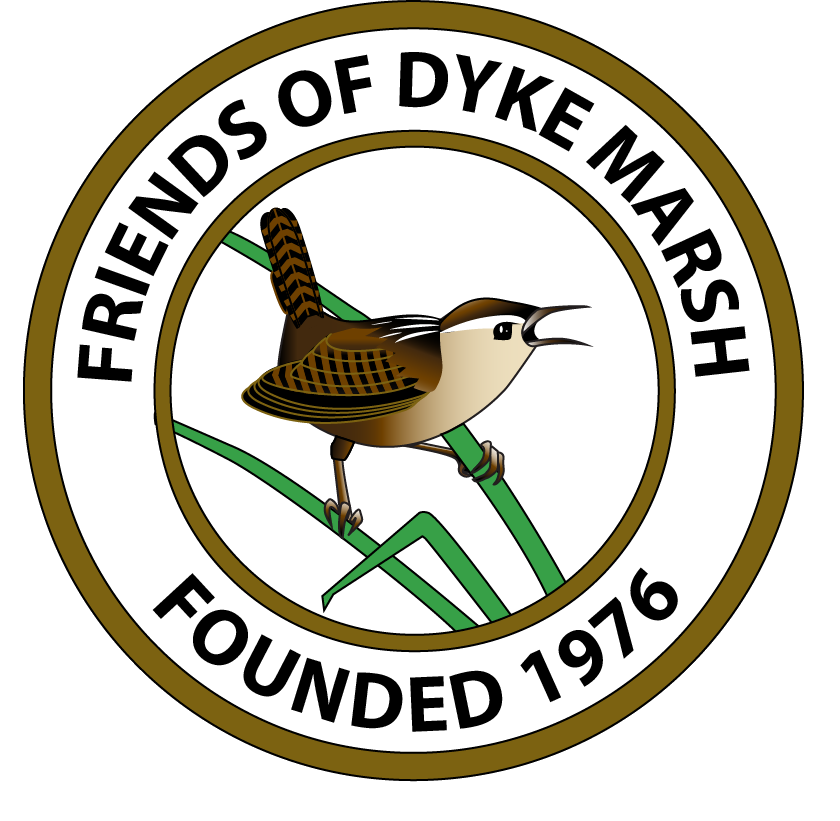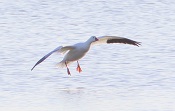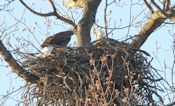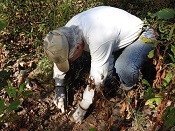On March 1, 2020, Shenandoah National Park biologist Rolf Gubler described the peregrine falcon (Falco peregrinus) restoration project to a packed room of 80 enthusiasts. This project in the park is a partnership of the National Park Service (NPS), William and Mary College’s Center for Conservation Biology (CCB), the Virginia Department of Game and Inland Fisheries (DGIF) and the Virginia Department of Transportation (VDOT).
News
In early January 2020, FODMer Ed Eder photographed a rare visitor flying over Dyke Marsh, Ross’s goose (Anser rossi), which National Park Service biologist Brent Steury said was a new record sighting for the George Washington Memorial Parkway.
This goose is white with black wingtips and considered the smallest of the "light" or snow geese. Ross's goose has a short neck, rounded head and a stubby bill with no "grin patch" seen in its larger cousins due to their curved tomium, the cutting edge of the bill, Ed explained. More mature birds, particularly males, have warty gray tubercles at the base of their bills, said Ed.
On December 2, 2019, the Fort Hunt Herald newspaper published an interview with FODM President Glenda Booth, in which she discusses the marsh restoration project, emerald ash borer infestation, the native plants project, bald eagles and more. Visit here to read the entire article.
On November 13, 2019, at FODM’s quarterly meeting, Dr. Sally Valdes outlined several ways that climate change is adversely affecting wildlife. Introducing the topic, she said that carbon dioxide and other greenhouse gas emissions have risen to levels unprecedented in the last 800,000 years. Carbon dioxide concentrations have been tracked continuously at the Mauna Loa Observatory in Hawaii since 1958 and the trend has been steadily upward, from about 315 parts per million (ppm) to 414 ppm in the spring of 2019.
On October 11, 2019, FODM volunteers and National Park Service staff put in 400 more native plants in the native plant restoration area in Dyke Marsh, a .65-acre plot on the west side of the Haul Road trail. The group planted riverbank wild rye (Elymus riparius), New York ironweed (Vernonia noveboracensis), wild rice (Zizania aquatica) and deer tongue (Dichanthelium clandestinum (syn. Panicum clandestinum)).
In the late summer and early fall, parts of Dyke Marsh turn a brilliant yellow. The yellow blossoms are typically plants in the family Asteraceae.
Many of the plants are Bidens laevis, common name, beggar-ticks, says botanist Dr. Elizabeth Wells, and she explains that they are restricted to low, wet places such as marshes. The name Bidens refers to the two teeth on each achene (Bidens = two (bi) teeth).







